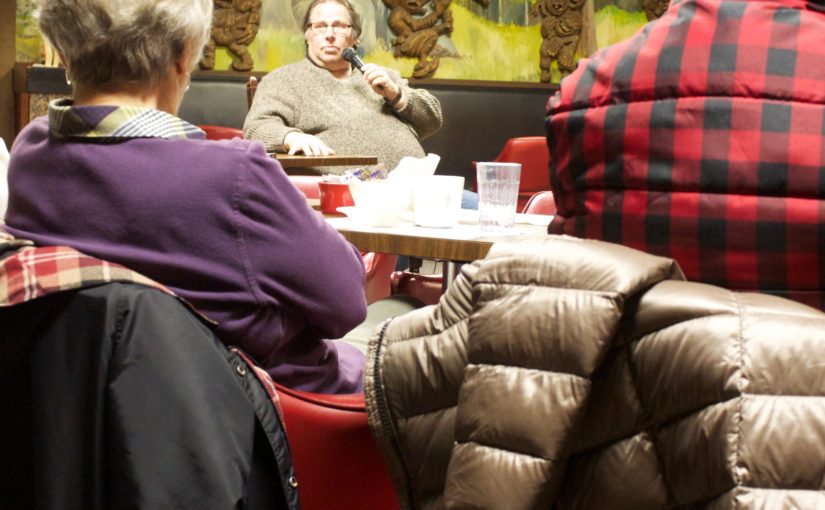
The public asked questions that dug deeper into polling politics.
The League of Women Voters of the Red River Valley hosted an event called “Public Opinion Polling” Friday, Nov. 2, 2018 at the Kringen Lodge 25 Sons of Norway. The event was free and open to the public.
The League of Women Voters of the Red River Valley is a nonpartisan political organization that encourages informed and active participation in government while working to increase understanding of major public policy issue.
Philip Baumann, professor of political science at the Minnesota State University Moorhead, spoke on the science of public opinion during the event. The event touched on important issues on polling and gave pieces of advice on how to use polls. The participants were also given an opportunity to discuss and ask questions.
Baumann started by pointing out the most important aspect of political polling. “It is not intended to predict the outcome of the election,” he said. He continued by stating that polling is rather a way to engage public opinion at the time the poll is taken. According to Baumann, polling is used to figure out or measure what people are thinking in the moment.
The process of polling is incredibly difficult. Many of the polling organizations tend to be good, but there are few out there that aren’t as reliable. It is good for people to have an understanding of the fundamental issues with polling in order to make a good evaluation.
“It is not intended to predict the outcome of the election,” -Philip Baumann, professor of political science at the Minnesota State University Moorhead
Baumann said he believes that finding sampling is fairly easy now compared to 30 years ago when he started. The telephone and random digit dialing made it easy to do a random sampling.
“But there are issues. One is response rate,” Baumann said. The response rate was about 30-35 percent when Baumann started polling, but the response rate has decreased to 8-9 percent. In order to make up for this, polling organizations do more calling.
Another fundamental issue is the people who participate are not an accurate cross section of the public. Different groups of people participate in polling more than others. An example is when the older generation is more willing to participate than the younger generation or when women participate more than men.
“The first thing you do is look at the demographics of the people you have interviewed. Does it come close to the demographics of the area you surveyed?” Baumann said. This could lead to the issues of the polling not matching the opinion of the larger population.
“You have to adjust using statistics” like adjusting for gender and age based on percentage within the population, Baumann said.
A last fundamental issue Baumann touched on was polling from people who vote and not just the public.
“You want the opinion of the people who are going to vote,” Baumann said. Polling organizations have to develop ways to identify who is a likely voter. According to Baumann, just asking if they plan to vote, and even if they reply with a “yes,” it doesn’t necessarily mean they will vote because people lie.
When the process of how the polling was gained isn’t accessible to the public, the public can’t know if it was done well or adjusted for variables. Advice for individuals who watch polling is to take any individual poll with a grain of salt.
